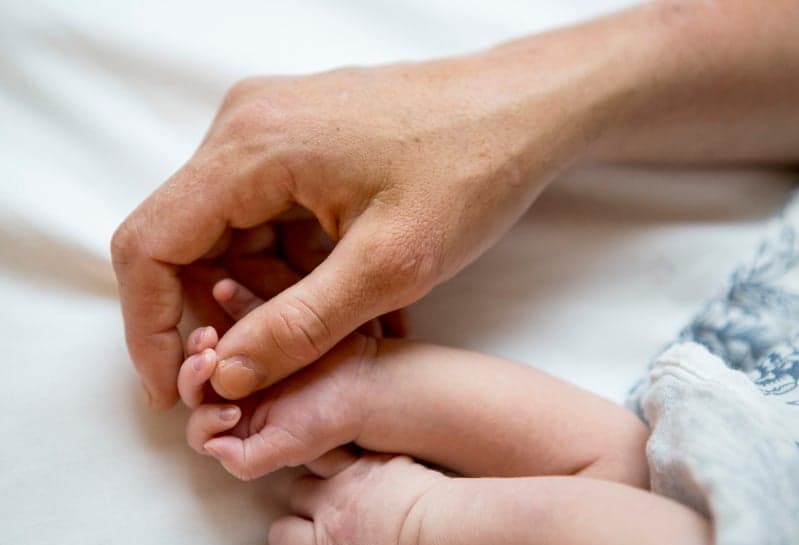Why Swedish mums are having children later in life

For Swedish mums, it is now more common to have a child after 45 years of age than as a teenager.
In 2022, 410 children were born to mothers aged 19 or younger, according to number crunchers Statistics Sweden. Meanwhile, 537 children were born to mothers aged 45 or older – the first year in which older mothers outnumbered their teenaged counterparts.
This upward trend began with the introduction of birth control pills in the 1960s, which allowed women greater control over their fertility and family planning.
Access to abortion and Sweden’s shift from an agricultural society to an industrialised one also bolstered the upward demographic trend for maternal age. In 1968, nearly 9,000 babies were born to teen mums, a number that has shrunk significantly over the decades.
This trend is not limited to Sweden. Across the Nordics, parents are waiting longer to have children.
“The upper limit is not as 'fixed' anymore,” Gunnar Andersson, a professor of demography at Stockholm University, told Swedish news agency TT. “Previously, there was perhaps an occasional 49-year-old. But with the new treatment methods, children are born to mothers at ages where it was not biologically possible before.”
IVF treatments were introduced in Sweden in the late 1970s, with the first Nordic IVF baby born in 1982 in Gothenburg. Today, both childless couples and single women without children in Sweden can apply for up to three free rounds of IVF at public hospitals.
This publicly-funded treatment for single women and single transgender men who can still reproduce is only available to Swedish citizens or permanent residence holders, according to the Karolinska University Hospital.
And while there are health risks associated with pregnancy at higher ages, overall, it seems that having an older mum can pay off for the children, who tend to born into better socio-economic conditions.
Delaying starting a family allows parents to focus on their education and on establishing their careers and livelihoods, Andersson said.
But sometimes, life happens.
“It may be that you do not find a suitable partner until you are a little older, or have a new relationship,” Andersson said. “You don't plan to wait to have children until you're 45.”
But even if the choice to have a baby until later in life is not a deliberate choice, for the child, having an older mum can be a positive thing.
“Children born to slightly older mothers are often better prepared than children born to very young mothers,” Andersson says. “The mothers have better incomes, social resources with a larger network and greater personal maturity.”
Comments (1)
See Also
In 2022, 410 children were born to mothers aged 19 or younger, according to number crunchers Statistics Sweden. Meanwhile, 537 children were born to mothers aged 45 or older – the first year in which older mothers outnumbered their teenaged counterparts.
This upward trend began with the introduction of birth control pills in the 1960s, which allowed women greater control over their fertility and family planning.
Access to abortion and Sweden’s shift from an agricultural society to an industrialised one also bolstered the upward demographic trend for maternal age. In 1968, nearly 9,000 babies were born to teen mums, a number that has shrunk significantly over the decades.
This trend is not limited to Sweden. Across the Nordics, parents are waiting longer to have children.
“The upper limit is not as 'fixed' anymore,” Gunnar Andersson, a professor of demography at Stockholm University, told Swedish news agency TT. “Previously, there was perhaps an occasional 49-year-old. But with the new treatment methods, children are born to mothers at ages where it was not biologically possible before.”
IVF treatments were introduced in Sweden in the late 1970s, with the first Nordic IVF baby born in 1982 in Gothenburg. Today, both childless couples and single women without children in Sweden can apply for up to three free rounds of IVF at public hospitals.
This publicly-funded treatment for single women and single transgender men who can still reproduce is only available to Swedish citizens or permanent residence holders, according to the Karolinska University Hospital.
And while there are health risks associated with pregnancy at higher ages, overall, it seems that having an older mum can pay off for the children, who tend to born into better socio-economic conditions.
Delaying starting a family allows parents to focus on their education and on establishing their careers and livelihoods, Andersson said.
But sometimes, life happens.
“It may be that you do not find a suitable partner until you are a little older, or have a new relationship,” Andersson said. “You don't plan to wait to have children until you're 45.”
But even if the choice to have a baby until later in life is not a deliberate choice, for the child, having an older mum can be a positive thing.
“Children born to slightly older mothers are often better prepared than children born to very young mothers,” Andersson says. “The mothers have better incomes, social resources with a larger network and greater personal maturity.”
Join the conversation in our comments section below. Share your own views and experience and if you have a question or suggestion for our journalists then email us at [email protected].
Please keep comments civil, constructive and on topic – and make sure to read our terms of use before getting involved.
Please log in here to leave a comment.